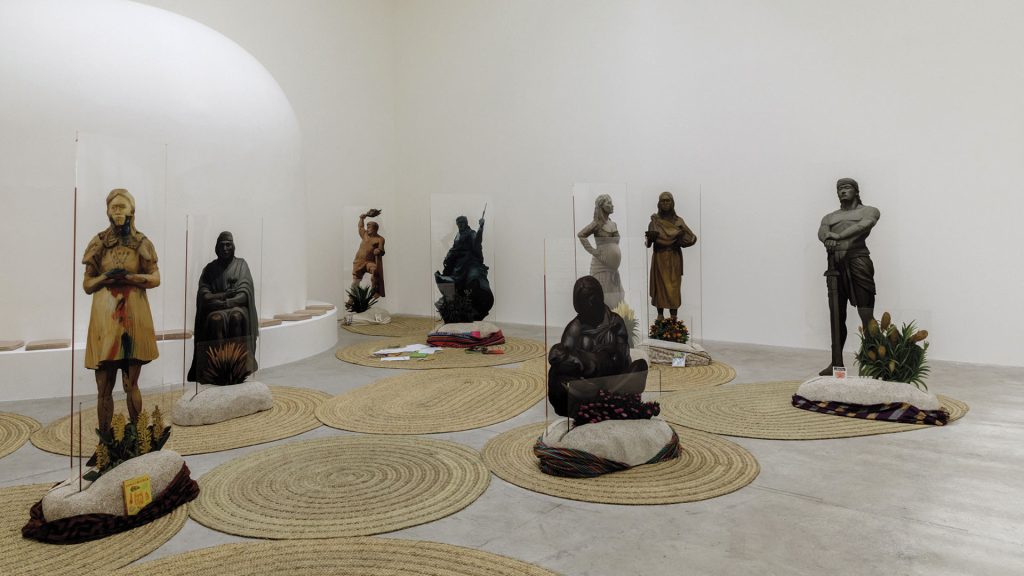
Revisiting masterpieces of 17th-century European art, Gamarra Heshiki’s Migrant Art Gallery transforms into an anti-museum that invites reflection on Spain’s colonial past and the shadows cast by imperialism into the present day.
The Spanish Pavilion stands out for its revolutionary choice of picking a foreign artist to represent the country. Sandra Gamarra Heshiki, though living in Madrid, was born in Lima. Her installation Pinacoteca Migrante is a critique on Spain’s colonial history that explores the way past imperialism still cast a shadow on the present. Migrant Art Gallery is an imaginary museum that collects some fifty pieces. The artist revisits masterpieces of seventeenth-century European art, distorts them, and re-contextualizes them, showing colonialism’s heritage of dehumanization. One of the most brilliant examples is her Retablo de la Naturaleza Moribunda, whose satire of Velázquez’s and Zurbarán’s paintings and the opulent symbols of power they depict is a reflection on the debasement and death caused by colonialism. In Máscaras Mestizas, Sandra Gamarra Heshiki shows racism in art: working on Frans Hals’s Family Group in a Landscape, the artist inverts the painting’s hierarchy, allowing the little African servant – almost invisible in the original – to finally come to prominence, while hiding the Europeans in barely-visible monochrome.